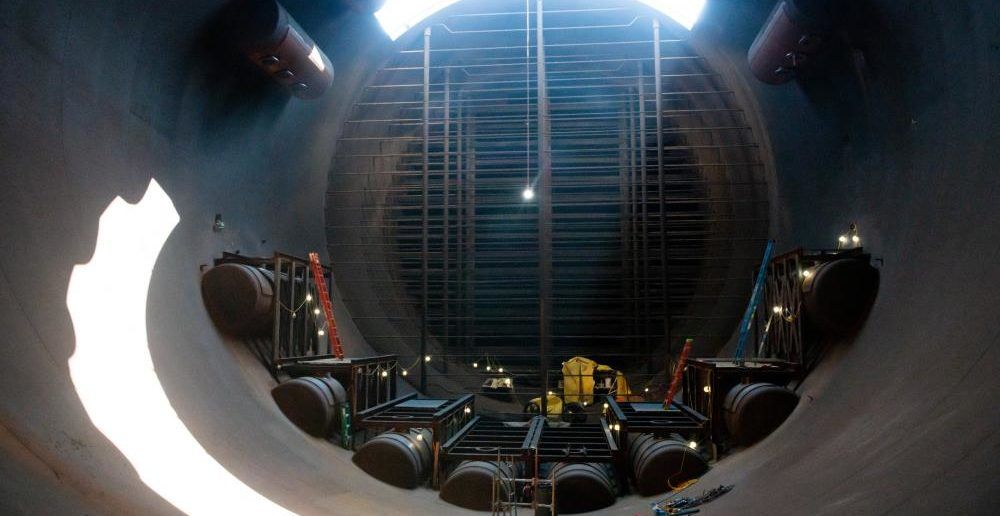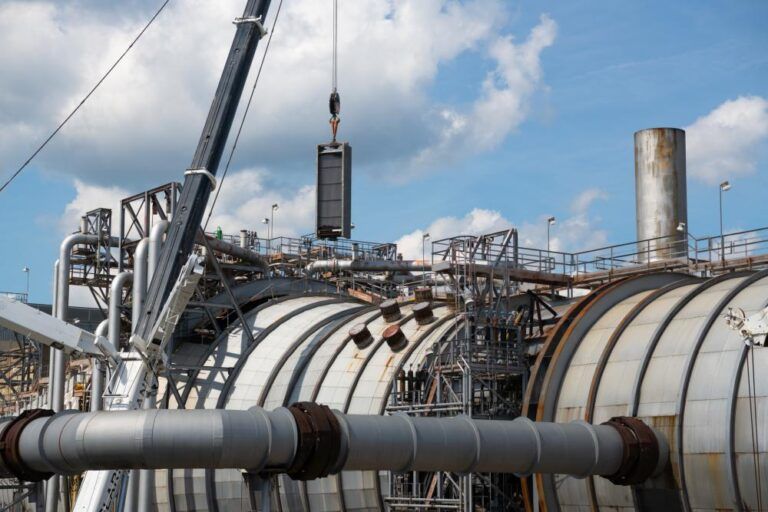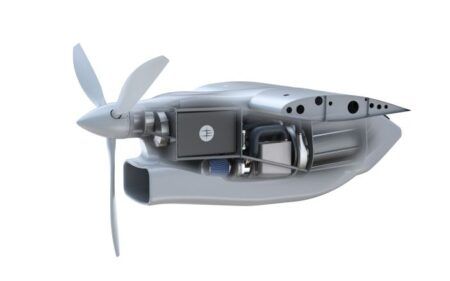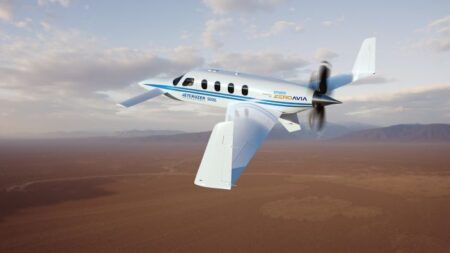Engine testing facilities at the US Air Force’s Arnold Engineering Development Complex in Tennessee are undergoing a significant upgrade in preparation for the next generation of fighter aircraft.
The Next Generation Turbine Engine Test Capability Project (NGTETC) is restoring and modernizing the engine test facility at Arnold Air Force Base to enable testing next-generation, full-scale propulsion systems under simulated flight conditions that are as realistic as possible.
“The next-generation turbine engines may incorporate new technologies that will require test facilities to provide higher inlet temperatures and potentially up to 50% more mass flow than the largest fighter engine in the fleet,” said Rick Hutchings, technical lead for the AEDC Future Capabilities Branch.
“There are no other test facilities or test cells in the Major Range and Test Facility Bases or the country with the required capability or expertise to test these new engines, qualify them for flight release and assure they are suitable to operate in the entire flight envelope than what exists at AEDC.
“However, improvement and restoration efforts are needed to address multiple deficiencies that exist in the turbine engine altitude test cells of the facility in order to test the full envelope of these engines. These deficiencies must be addressed by capital investments before the future technologies appear in the next-generation propulsion systems.”
Upgrades
The upgrades to the C-Plant and two altitude test cells, C-1 and C-2 come after years of use has degraded some systems, while advances in technology mean upgrades are needed to meet anticipated testing needs.
The C test cells are both 28ft (8.5m) in diameter, with C-1 being around 45ft (14m) long. The ability to achieve Mach 3 and operate at approximately 600˚F (315˚C) was recently restored to C-1 as part of the NGTETC. C-2 can achieve up to Mach 2.3 at 350˚F Fahrenheit. Altitudes up to 75,000ft above sea level can be simulated in both test cells.
The NGTETC includes restoring and increasing exhaust gas cooling capability, making repairs to improve operational efficiency, adding a heated in-bleed capability and upgrading instrumentation, data and control, or ID&C, systems within the C-1 inlets. The project is a multi-year effort with incremental capability gains realized along the way.
The exhaust gas cooling system is vital for protecting the exhausters downstream which are used to lower the pressure in the test cell to simulate altitude operations. When exhaust gases exit an engine they can be up to 3,000˚F (1,650˚C) and must be cooled to less than 120˚F (50˚C). As new engines with greater mass flows are developed, the exhaust gas cooling system must be able to cool more exhaust from those same temperatures in the same distance within the facility.

Spray bars that had rusted over time were replaced to restore capability. The bars cool the exhaust by spraying water into the airflow.
Installation of 24 heat exchangers into exhaust cooler 1 to enable the cooling of larger volumes of exhaust began this fall. The exchangers are made of coils of piping for water to flow through, but the facility can be operated with them dry as well. Jaron Northcutt, NGTETC project manager, compared them to radiators in a car, providing more surface area with a lower temperature for the high temperature exhaust to come into contact.
A loss of operational efficiency will be addressed by replacing worn expansion joints located within the exhaust side of the facility. The joints have begun to leak, making it harder to set and sustain altitude test conditions due to the additional atmospheric air entering the system.
The addition of the heated in-bleed capability will allow test engineers to inject heated, high-pressure air into the compressor of an engine for compressor stall mapping. According to Northcutt, this capability is expected to become available this calendar year for use by test programs. The permanent capability infrastructure is anticipated to be completed next calendar year.
The ID&C systems in C-1 must be upgraded to support the increased inlet temperatures that coincide with higher Mach number operations.
“For the last 60 years, AEDC turbine engine ground test facilities have tested turbine engines for the majority of the Department of Defense’s fighters, bombers, cruise missiles, and Intelligence, Surveillance and Reconnaissance platforms,” Hutchings said. “AEDC’s role in developing and fielding these weapon systems, including propulsion suitability for initial flight release, underscore the importance of sustaining and investing in these critical facilities to provide the capability to develop the next generation of air breathing propulsion systems required to meet the diverse and complex security challenges around the globe.”





